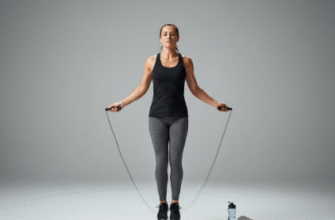The world seems to spin faster every day, doesn’t it? We rush from task to task, meeting to meeting, obligation to obligation. Our phones buzz constantly, demanding attention, pulling our focus in a million different directions. We’re told that busyness equals productivity, that to stop is to fall behind. But what if this constant motion, this relentless drive, is actually counterproductive? What if the secret to getting more done, feeling better, and thinking clearer lies not in speeding up, but in deliberately, intentionally, slowing down?
Welcome to the power of the intentional pause. This isn’t about laziness or procrastination. It’s not about zoning out scrolling through social media feeds, which often leaves us feeling more drained. An intentional pause is a conscious decision to step away from the relentless stream of doing, thinking, and reacting, even for just a few moments. It’s about creating pockets of stillness in our otherwise hectic days.
Why Bother Hitting Pause?
In a culture that often glorifies hustle, suggesting regular pauses might sound like heresy. But the benefits are tangible and far-reaching, impacting our mental, emotional, and even physical states. It’s less about stopping work and more about optimizing our ability to work effectively and live fully when we *are* engaged.
Sharpening Your Focus
Think of your brain like a muscle. If you constantly push it without rest, it fatigues. You start making mistakes, your attention wanders, and tasks take longer than they should. Short, intentional breaks allow your prefrontal cortex – the part of your brain responsible for focus, decision-making, and complex thought – to rest and reset. When you return to your task after a brief pause, you often find you have renewed clarity and can concentrate more effectively. It’s like letting your mental lens refocus.
Taming the Stress Monster
Constant pressure and demands trigger our body’s stress response (the fight-or-flight mechanism). While useful in genuine emergencies, chronic activation takes a toll. Intentional pauses, especially those involving deep breathing or mindfulness, can actively shift your nervous system from a stressed state (sympathetic dominance) to a relaxed state (parasympathetic dominance). This lowers stress hormones like cortisol, reduces heart rate, and promotes a sense of calm, making you better equipped to handle challenges without feeling overwhelmed.
Unlocking Creativity and Problem-Solving
Have you ever noticed that your best ideas often come when you’re in the shower, taking a walk, or doing something completely unrelated to the problem you’re trying to solve? This isn’t a coincidence. When you step away and let your mind wander (the ‘default mode network’ in neuroscience terms), it starts making connections between seemingly unrelated concepts. Pausing gives your subconscious space to work its magic, often leading to breakthroughs and creative solutions that remain elusive when you’re trying too hard to force them.
Preventing the Burnout Spiral
Burnout isn’t just feeling tired; it’s a state of chronic physical and emotional exhaustion often accompanied by cynicism and a sense of ineffectiveness. It creeps up slowly, often fueled by the refusal to take breaks. Regularly incorporating intentional pauses acts as a preventative measure. These moments of respite help replenish your mental and emotional reserves, making you more resilient and less likely to hit that wall of complete depletion. They are small deposits into your well-being account.
Ignoring the need for breaks doesn’t make you tougher; it makes you more susceptible to burnout. Chronic stress without adequate recovery significantly impacts cognitive function, emotional stability, and overall health. Pushing through constantly is not sustainable and often leads to a much longer, forced stop down the line.
Making Pauses Practical: It’s Easier Than You Think
The idea of adding *another* thing to your packed schedule might seem daunting. But intentional pauses don’t need to be lengthy or elaborate. The key is consistency and intentionality.
What Does an Intentional Pause Look Like?
It’s about quality, not necessarily quantity. Here are some simple ways to incorporate pauses:
- Mindful Minutes: Set a timer for 1, 2, or 5 minutes. Close your eyes (or soften your gaze) and focus solely on your breath. Notice the sensation of the air entering and leaving your body. When your mind wanders (which it will), gently guide it back to your breath.
- Sensory Check-in: Stop what you’re doing and engage your senses. What do you see right now (colors, shapes)? What do you hear (distant traffic, humming computer, birds)? What do you feel (the chair beneath you, the air temperature)? What do you smell? This grounds you in the present moment.
- Short Stroll: Get up and walk, even if it’s just around the room, down the hall, or preferably, outside for a few minutes. Pay attention to the physical sensation of walking.
- Stretch Break: Release physical tension. Roll your shoulders, stretch your neck gently, reach for the sky. Holding stress physically impacts us mentally.
- Hydration Pause: Get up, walk to get a glass of water, and drink it mindfully, focusing only on the act of drinking.
- Gaze Out the Window: Let your eyes rest on a distant object or scene. Allow your mind to simply observe without judgment or analysis for a minute or two.
Crucially, an intentional pause is different from distraction. Mindlessly scrolling social media, checking emails, or watching random videos doesn’t provide the same restorative benefits. The goal is to disengage actively, not just switch to a different, often equally stimulating, activity.
Integrating Pauses into Your Day
How do you make this a habit?
- Schedule Them: If needed, block out short 5-10 minute pause times in your calendar, just like meetings.
- Use Transitions: Build pauses into the transitions between tasks. Finished a report? Pause before starting the next email batch. Ended a call? Pause before jumping into the next item on your list.
- Set Timers: Use techniques like the Pomodoro Technique (work for 25 minutes, pause for 5) or simply set a recurring timer every hour to remind yourself to take a brief break.
- Listen to Your Body: Notice signs of fatigue, restlessness, or irritability. These are cues that your mind and body need a break. Don’t ignore them.
- Start Small: Don’t aim for an hour of meditation on day one. Begin with just one or two minutes, several times a day. Consistency is more important than duration initially.
Overcoming the Resistance
It’s common to feel resistant to pausing. Thoughts like “I don’t have time,” “It feels lazy,” or “I’ll lose my momentum” might surface. Recognize these thoughts for what they are – often ingrained habits of thinking tied to the glorification of busyness. Reframe the pause: it’s not lost time; it’s an investment in better focus, sustained energy, and higher quality work later. It’s a strategic tool, not a sign of weakness. Remind yourself that elite athletes understand the critical importance of rest and recovery for peak performance; knowledge workers are no different.
Taking intentional pauses isn’t about escaping your life; it’s about being more present and effective within it. It’s a simple yet profound practice that allows you to navigate the demands of modern life with greater ease, clarity, and resilience. By consciously stepping back, even for moments, you reclaim your focus, manage stress, boost creativity, and ultimately, enhance your overall well-being. Give it a try. Start small, be consistent, and notice the difference. The power to recharge and refocus is always just a pause away.








